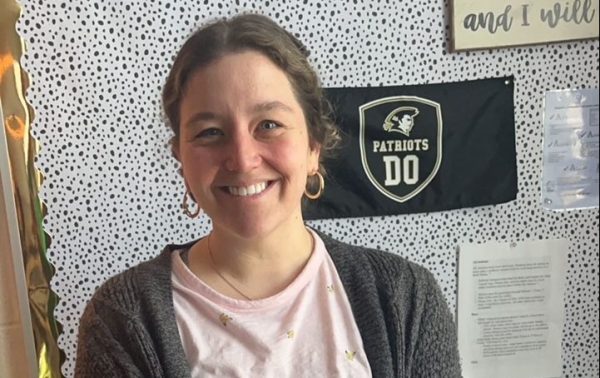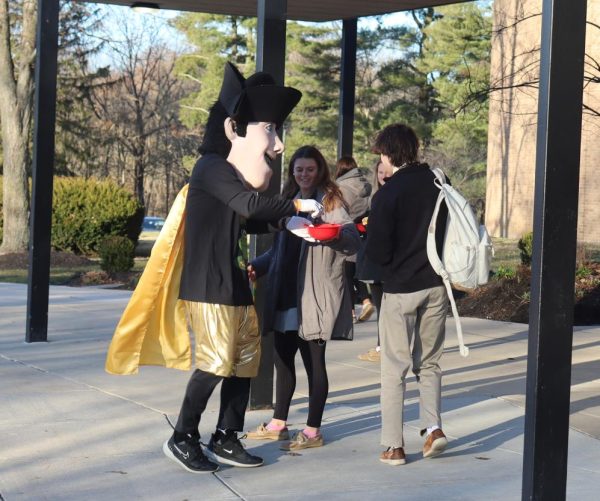Navigating through cliques
Finding your way through high school can be difficult, and cliques can complicate the journey
Take a look in the cafeteria during mod seven and you’ll likely spot two groups segregated by the color of their shirts.
Meet the Black Shirts and the White Shirts.
On the outside, it seems like two groups of junior girls are wearing the same shirt color as their friends. However, there is a debate over whether the colored shirts represent a hidden message: we’re different from them.
“There’s no other reason they’d all just happen to wear the same color shirt,” junior Maria said. Maria is a pseudonym given to protect a junior who thought she would be “roasted” on Twitter if people discovered her identity.
The Patriot conducted an anonymous survey via SurveyMonkey and received 193 responses. When asked in the survey about the first thing they thought of when they heard the word “clique,” almost a dozen students responded with comments about the White Shirts and the Black Shirts.
When The Patriot polled 36 students in the cafeteria and a U.S. History class, 16 believed that the black and white shirts represent two separate cliques, 15 believed they represent two friend groups, and five said they were interchangeable.
So what is the definition of a clique? Merriam-Webster defines a clique as “a narrow exclusive circle or group of persons especially one held together by common interests, views, or purposes.” According to SurveyMonkey, 76 percent agree with this definition, whereas 24 percent believe that a clique is defined as a group of friends.
I think cliques make people feel like they’ll never belong, like they’re isolated from everybody.
— anonymous sophomore
The majority of those interviewed by The Patriot agreed that there is not a single cause that results in cliques, but there are many influences.
According to a student who answered The Patriot’s survey, cliques form because “people who are only interested in themselves [and] who are insecure need others to make themselves feel completely comfortable while other people can not join their groups since they’re usually not confident without their friends.”
Some students believe that cliques consist of people who knew each other before high school. “I think [cliques are] based on who you went to middle school with,” Maria said.
Others agree with Maria and think middle schools are the main influence. “I think [students] like to stick [with the people they went to middle school with] because they’re too scared to stray from their pack, … they don’t want to stray from the people they were born with,” senior Darian Welden said.
Another possible cause of a clique developing is based on similar interests or activities that students share. “When different students do different activities, they form groups and stay that way,” another freshman said.
International students often find themselves forming cliques with non-American students as a result of the language barrier and their inability to communicate.
“Sometimes it’s hard to make friends when you don’t understand each other,” sophomore Lily Chen said.
“A lot of Chinese students […] think American students are hard to connect with because they talk about things that we don’t even know about. It’s hard to engage in a conversation and some people just give up on that … so it ends up being a Chinese clique,” senior Gavin Ding said.
Cliques can have a negative impact on self-esteem and social lives. “I was a part of a group that I didn’t think was a clique, but they started to shun me and cut me out. I felt isolated and I realized they were a clique,” an anonymous sophomore said. “I think cliques make people feel like they’ll never belong, like they’re isolated from everybody.”
One student thinks that cliques can impact you negatively if you allow them to. “[Cliques don’t] impact you if you don’t care, but I think they make people feel like they’ll never be a part of something,” Maria said.
I don’t know if you can necessarily fix cliques because it’s just who people want to be friends with.
— junior Hailey Ishak
In a poll of 21 students that took place in a junior U.S. History class, eight believed that cliques are a problem at JC, 13 were neutral, and none said that cliques were not a problem. When the students were asked what the community can do to prevent cliques from forming, they hesitated and were unsure how to solve the problem.
“I don’t know if you can necessarily fix cliques because it’s just who people want to be friends with,” junior Hailey Ishak said. “If there is a mean clique, then obviously that needs to be fixed, but the fact that [people] have friend groups, you can’t really fix that.”
Caroline Cooney is an In-Focus Editor and Grace Mottley is a News Editor for The Patriot and jcpatriot.com.






